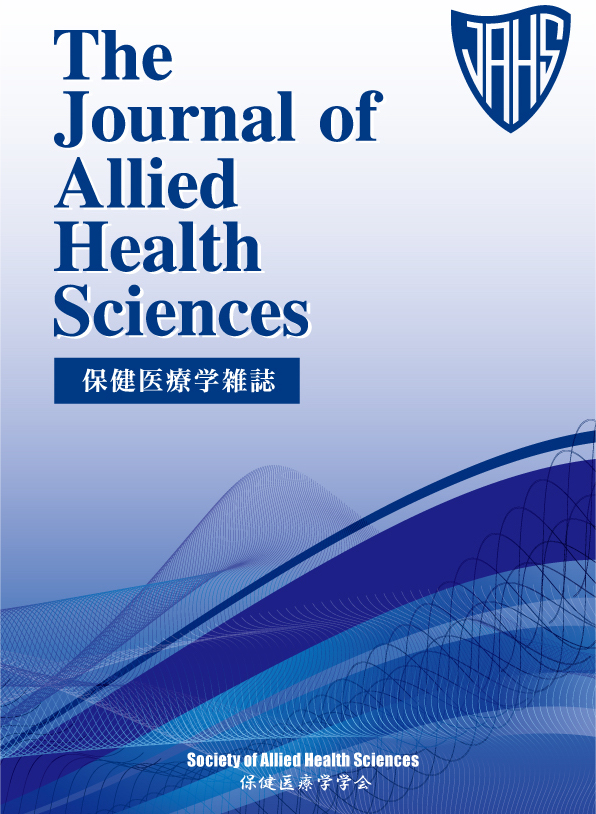Volume 12, Issue 2
Displaying 1-11 of 11 articles from this issue
- |<
- <
- 1
- >
- >|
Original article
-
Article type: Original article
2021Volume 12Issue 2 Pages 83-91
Published: October 01, 2021
Released on J-STAGE: October 01, 2021
Download PDF (673K) -
Subject area: Original article
2021Volume 12Issue 2 Pages 92-97
Published: October 01, 2021
Released on J-STAGE: October 01, 2021
Download PDF (521K)
-
2021Volume 12Issue 2 Pages 98-105
Published: October 01, 2021
Released on J-STAGE: October 01, 2021
Download PDF (978K) -
2021Volume 12Issue 2 Pages 106-112
Published: October 01, 2021
Released on J-STAGE: October 01, 2021
Download PDF (1046K) -
2021Volume 12Issue 2 Pages 113-122
Published: October 01, 2021
Released on J-STAGE: October 01, 2021
Download PDF (5093K) -
2021Volume 12Issue 2 Pages 123-128
Published: October 01, 2021
Released on J-STAGE: October 01, 2021
Download PDF (579K) -
2021Volume 12Issue 2 Pages 129-140
Published: October 01, 2021
Released on J-STAGE: October 01, 2021
Download PDF (1818K) -
2021Volume 12Issue 2 Pages 141-148
Published: October 01, 2021
Released on J-STAGE: October 01, 2021
Download PDF (1350K) -
2021Volume 12Issue 2 Pages 149-157
Published: October 01, 2021
Released on J-STAGE: October 01, 2021
Download PDF (3618K)
-
2021Volume 12Issue 2 Pages 158-166
Published: October 01, 2021
Released on J-STAGE: October 01, 2021
Download PDF (572K)
-
2021Volume 12Issue 2 Pages 167-174
Published: October 01, 2021
Released on J-STAGE: October 01, 2021
Download PDF (880K)
- |<
- <
- 1
- >
- >|
